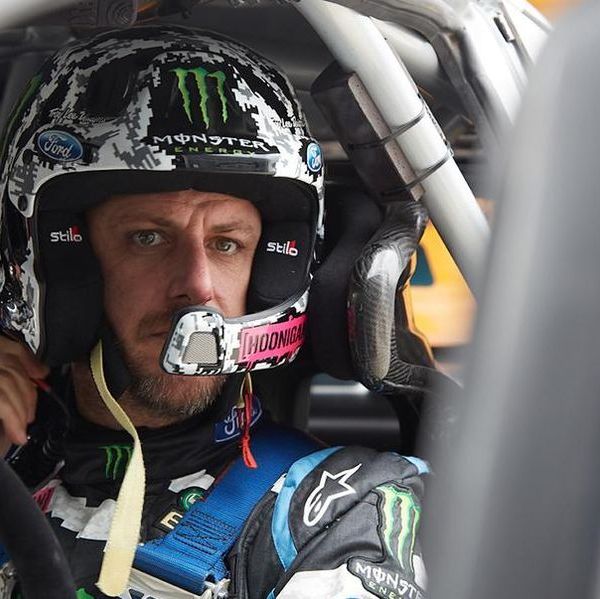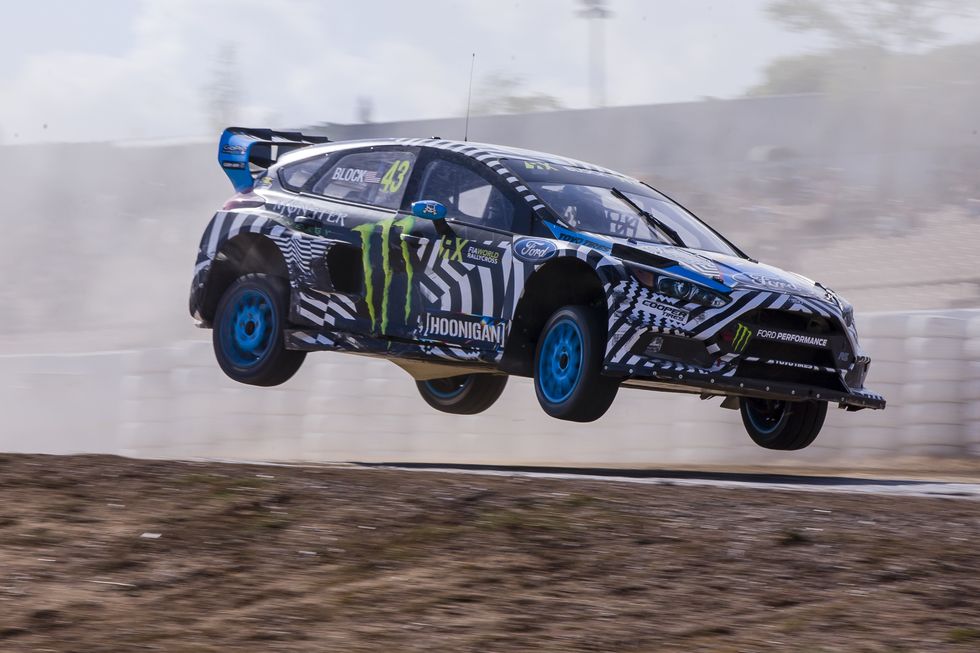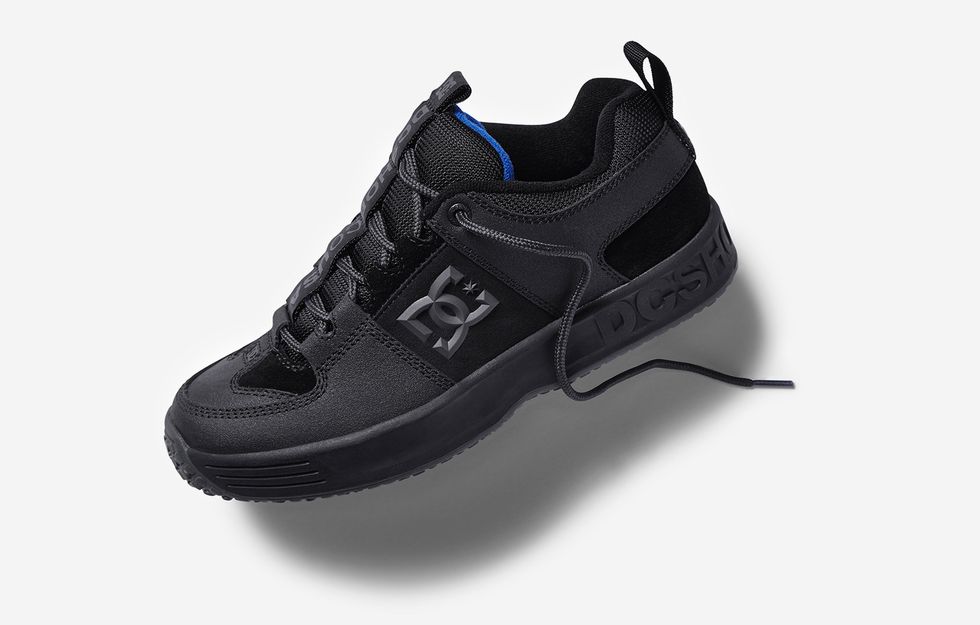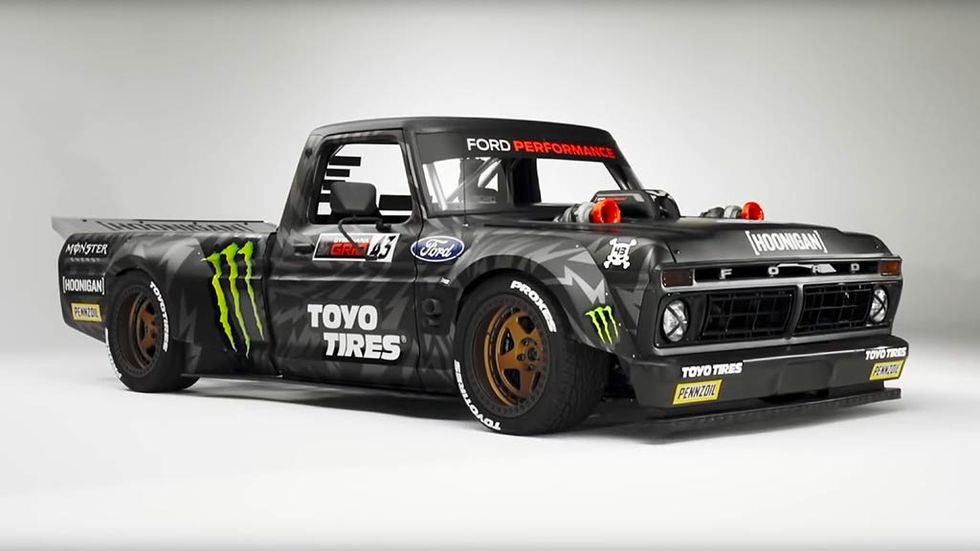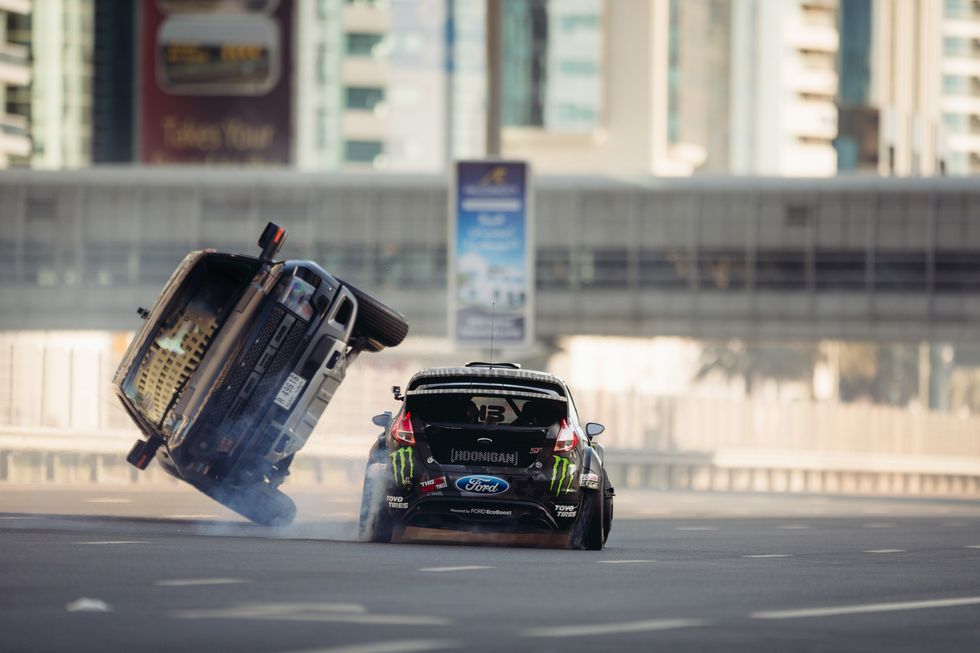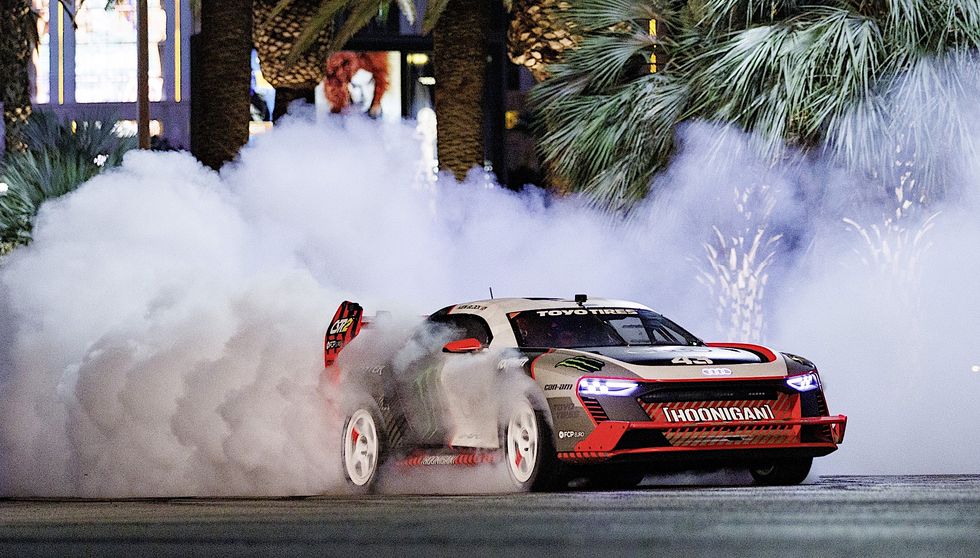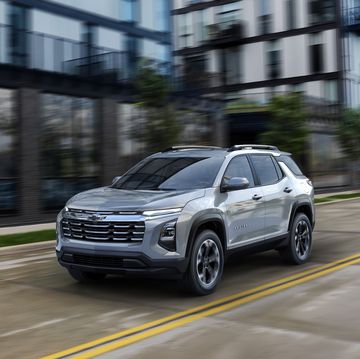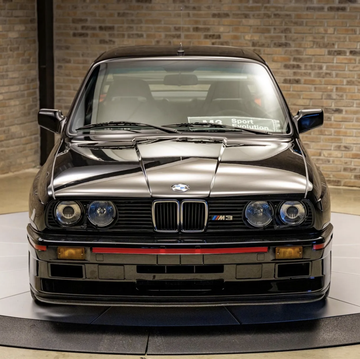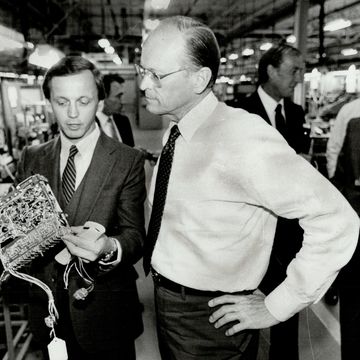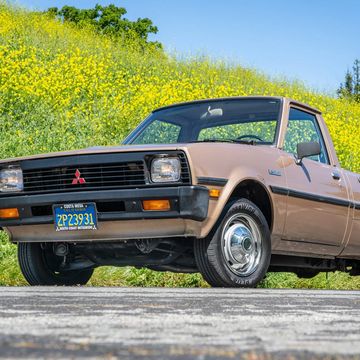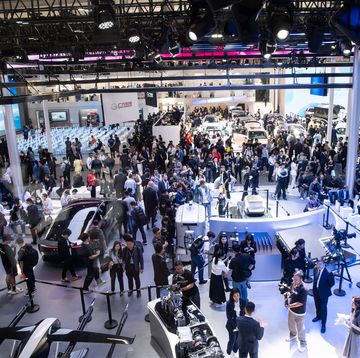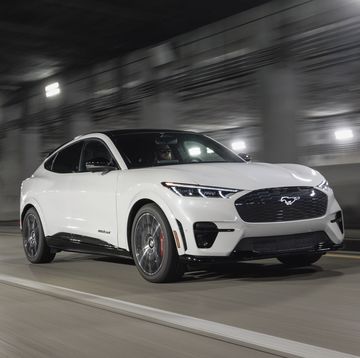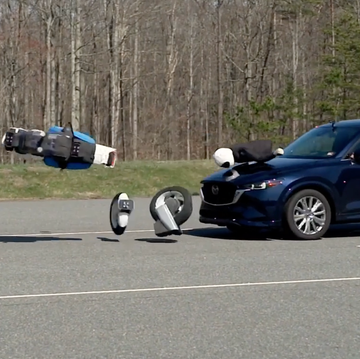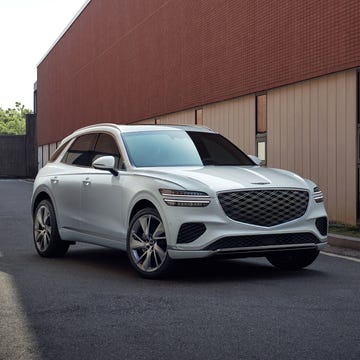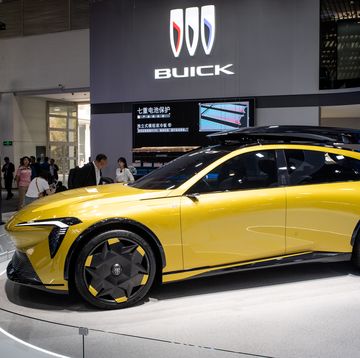“I grew up, no matter what I did, trying to have as much fun as I possibly could,” Ken Block explained back in 2014. “When I grew up skateboarding, I didn’t compete in skateboarding, I just went out and had fun. Well, it’s the opposite with racecar driving. The only time I see my car is when we’re racing or testing for racing. The fun time is that time in the race.”
Block, whose influence derived wholly from his exuberant, enthusiastic embrace of life, died in an accident while snowmobiling in Utah on January 2, 2023. He was 55 years old and leaves behind his wife Lucy and three children.
“I was born in Long Beach, California,” Block told Matt Anderson of The Henry Ford Museum in 2019. “My dad had his own business that had to do with the printed circuit board industry, so I grew up going to Dodgers games, skateboarding, riding BMX bikes. I tried a lot of team sports but ended up liking more individual type sports and so I ended up being a skateboarder and, later on, racing motocross just at an amateur level and eventually snowboarding.”
It was the joy of skateboarding that led to Block and his friend from a San Diego community college Damon Way to form several clothing brands. And then DC Shoes was added to their stable in 1994.
Skateboarders are notoriously hard on shoes, often shredding through the canvas or ripping the rubber off the soles of conventional sneakers. And skateboarding wasn’t taken seriously by big-time shoemakers. DC did and built footwear optimized to survive the rigors of the sport.
“We did simple things that made a big difference, like putting nylon loops around the spots
where skateboarders shoe laces would wear away from abrasion,” the two DC founders said in a combined interview with Fast Company in 2003. It was Block, working with advice from other boarders, who designed the first DC kicks. And they were an immediate hit with retailer demand so high that they were instantly backordered. By 1995, the DC clothing and shoe brands were generating almost $7 million in annual revenue. “We built the DC Shoes brand by filling a need we saw in our own lives in our early 20s. Skateboarders need technical product and we developed the first technical skateboarding shoe.”
But it wasn’t just skateboarders who made DC so successful. It was people who wanted skateboarding style – much of it defined by Block – that propelled the company’s success. They weren’t just functional shoes, they were an affordable fashion item.
By 2002, DC was selling shoes and clothing in 52 countries and attracting $250 million in retail sales. In March 2004, the company was sold to Quiksilver for a price reported by The New York Times to be up to $113 million in cash and 1.6 million restricted shares of stock. “The sale of DC really has to do with a lot of things,” Block explained in his Henry Ford interview. “It has to do with a business partner that we had to get out of the company; has to do with sort of business fatigue; has to do with both Damon and I getting married and moving on with our lives. So there was a lot to it. We really enjoyed DC. We kept working there for years after.”
As he aged through the end of his thirties, Block’s attention turned to motorsports. Not just motocross, but rally cars.
“I grew up a fan of rally,” Block said in 2014. “I was not impressed by NASCAR or drag racing. But I didn’t know it existed in the states until Travis Pastrana ran some events in 2003 or 2004.”
Emboldened by the independence that came with the DC sale, Block dove into rallying with utter abandon. “I came at it from the perspective that I was older and I was just going to try and be the best driver I could be,” he said.
And Block was instantly fast. “If you’re not scared,” Block told me in 2008 about his attitude towards rally driving, “you’re not going fast enough. I’m so nervous I get a stomachache.”
Block’s first rally was Canada’s 2004 Rally of the Tall Pines and was running a full American schedule in a Subaru WRX STi by the next year. In 2006 he won his first race at the Rally in the 100 Acre Wood. By 2010, he had won that event five straight times. Over the next 17 seasons, he’d win 23 rallying events at the national level. Going into the last rally of the 2022 American Rally Championship season, Block and his co-driver Alex Gelsomino had won four events in a WRC-spec Hyundai i20 and were in a tight battle with Subaru’s Brandon Semenuk and Keaton Williams. It was only the Subaru team’s win in that final even, the Lake Superior Performance Rally, that gave them the championship. Remember, at this point, Block was 55 years old.
The allure of the World Rally Championship was irresistible for Block. “I’ve never had any misconceptions that I was going to go win a WRC event,” he told me. He ran a total of 25 WRC events with his best result being a seventh in the 2013 Rally Guanajuato Mexico driving a Ford Fiesta RS.
With the i20 out of spec for the 2023 season, Block brought it to Los Angeles to have some fun before it was exported out of the country. Fun, as in “hooning.”
Block essentially defined hooning and became the modern hoon. And hooning is, at the high level practiced by Block, the joyous use of those rally driving techniques in pursuit of entertainment. It’s controlled lunacy that looks uncontrolled.
“The term ‘hoon’ came about because when I started making all those videos is that the media – particularly in the States but a bit in Europe – was using it as sort of a term of endearment,” he said in 2014. “I think 0-60 called me King of the Hoons when we put out the first Gymkhana video. As the idea of having fun with the car instead of just racing it began to take shape. So, we started using the word more and more. And then eventually we came up with the word ‘Hoonigan’ to represent me and what I do and stand out in the marketplace.”
The moment Hoonigan entrenched itself into the automotive zeitgeist was November 2006 on the Discovery Channel. Block launched his WRX STi into the air from a dirt ramp, flew a record 171 feet, landed on another dirt ramp and drove away. It was astonishing. Practically no one remembers that the show was called Stunt Junkies, but no one could forget the stunt.
“You have to be very calculating,” the Block later understated. Car and Driver explained the physics involved in a short feature.
Besides launching that Subaru, that stunt launched Hoonigan as a brand and the increasingly ambitious series of “Gymkhana” videos that riveted millions of viewers on YouTube. That in turn led to a series of fascinating vehicles featured in those videos and to the Hoonigan brand becoming yet another successful business for Block.
Fords, Porsches, Audis, Hyundais, Subarus… almost anything that passed through the Hoonigan portals could be twisted into an exaggeration of itself and a star of its own kind. The Gymkhana videos involved clouds of tire smoke, iconic locations, and ever more daring antics. But they were also carefully crafted to be commercially successful.
“At the base of it all I’m a rally guy – a stage rally guy,” Block told me in 2014. “That’s where I come from, that’s where I’ve learned all these skills. But as I was getting more and more of those skills, I wanted to be in the car more. When I grew up skateboarding, I didn’t compete in skateboarding, I just went out and had fun. Well, it’s the opposite with racecar driving. The only time I see my car is when we’re racing or testing for racing. The fun time is that time in the race. And sometimes, if the race isn’t going well, you’re not having very much fun. So, I was trying to devise ways to get the car away from the racing. And I really didn’t understand back then that most racecar drivers never get to do that. That there isn’t like a ‘fun side’ of motorsports. I discovered gymkhana as a grassroots way to go out and play with the car. But it wasn’t until I started doing the videos and filming it that we began exploring the limits of the car and having fun.”
“Economies of scale. It’s so expensive to race cars. If I was a skateboarder and I had to go do a contest in Spain, Okay, I’d go pack my bag and skateboard and fly over. But with motorsports we’ve got to fly the car over and half a dozen mechanics. And it’s a half million-dollar racecar. Plus there are tires and it’s quite, quite expensive. If you’re from Finland and you need a sponsor, because the country’s so small you get smaller money. But because we come from America… the economy of scale is Monster selling 10,000 cans in Finland and in America it might 100,000 cans because the country is so much bigger. So, I’d say on that side – raising some of the sponsorship dollars – has been a little bit easier because we’re coming from America.”
Block would rise up on his toes as he spoke when something excited him. He only indulged journalists; his eyes would seem to wander around as if he were looking for anything else that could possibly be more interesting than the immediate conversation. But he never failed to engage with his fans. Even as he entered his fifties, he never seemed any particular age. He could attract anyone from any place to conspire with him in the pursuit of fun, spectacle and next level lunacy. And he was both an instinctive marketeer and a keen businessman.
“I work with a lot of great companies and they all have their own distinct messages. For us to do our own fun marketing with motorsports, we needed to basically do our own thing. Brian [Scotto] and I had all these fun ideas and things to do, not only marketing wise but apparel wise and we needed an outlet. It was just easier for us to start our own little brand. Hoonigan gives me another creative outlet to work with someone like Brian doing marketing. It doesn’t take as much time as you think. And that’s mostly because I can’t help being creative.”
“At the end of the day, all motorsports is really a hobby. It’s all really fun. The main thing for me, is that I just don’t pay for this. I love having a creative outlet and going out to race, and having other people pay for it.” He ran at Pikes Peak in 2022 and was eager to get back this year.
Online social media was the lever Block used to communicate with his audience. And Block was posting on Twitter and Instagram from his Utah ranch during his ongoing snow adventures Monday. His last post was announcing the fourth video featuring his 16-year-old daughter Lia and the 1985 Audi Quattro she had constructed for her own pursuit of automotive thrills. The immensity of what Block anticipated for her future nearly bursts from that post.
The circumstances of Block’s death can’t overshadow the substance of his life. It’s not a life that can be adequately summarized on a spreadsheet or fully reflected in a long resume. The word legendary is too easily used today; so often applied to people whose accomplishments are slight and characters uninteresting. The better words for Block are inspirational and aspirational.
“The main thing for me, when I’m not competitive anymore and it’s not fun anymore, that’s when I’ll start slowing down or consider quitting.” And Ken Block never slowed down.

John Pearley Huffman has been writing about cars since 1990 and is getting okay at it. Besides Car and Driver, his work has appeared in the New York Times and more than 100 automotive publications and websites. A graduate of UC Santa Barbara, he still lives near that campus with his wife and two children. He owns a pair of Toyota Tundras and two Siberian huskies. He used to have a Nova and a Camaro.
